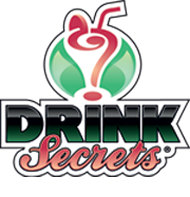Pink Champagne
Pink champagne is mostly associated with celebrations or romantic events. Weddings, anniversaries, and Valentine's Day are usually some of the occasions that you bring out this special drink. It just never fails to put you in that festive mood. This bubbly is also associated with the rich. Luxury, wealth, power, and yes, don't forget the champagne. It completes that perfect picture of indulgent extravagance.
Champagne or Sparkling wine?
Champagne is a term not commonly used for bubbly sparkling wines. Champagne is a region in the Northeast of France and only the sparkling wines that are made from the grapes in this area are the only ones worthy enough to be officially called champagne. So you may ask, how is pink champagne made? Let's take a quick look at how the popular pink bubbly is made.
The Grapes
White, red, and rose wine basically come from the same grapes. They just go through different processes. The usual grapes used are the Chardonnay, Pinot Noir, Pinot Gris, and Pinot Meunier. Chardonnay is a grape for white wines while the Pinot Noir is for red wines. Those two varieties of grapes are most frequently used. Getting the color of pink champagne is simply letting the red grapes with their skins soak for a bit in the liquid. The longer the grapes are soaked, the pinker the liquid gets.
Different methods
Any color, may it be red, white, or pink champagne goes through the same traditional method known as the Méthode Champenoise. Using this process, wine is fermented like still wine. There are no bubbles in the wine when fermentation is finished. It goes through another fermentation stage where the bubbles are created in the wine bottle itself. Champagne bottles are filled with a mixture of yeasts, sugar, and still wine known as Liqueur de tirage then sealed. The added mixture allows another fermentation process to take place inside the bottle. The fermenting process can range from a few days to 3 months. After it has aged for a short time, sediments are moved to the bottle of the neck in a process called remuage. After a while, the sediment is finally removed. The sediment is ejected by the carbon dioxide pressure. Sugar and wine is added. The final addition of sugar determines the sweetness of the drink. It is then recorked and aged for another short while. Then it is ready to be sold.
Pink champagne usually has a taste that is less acidic compared to white wines. Flavors and aromas of red berries are incorporated although some flavors and sweetness may vary depending on the winemakers. But in general, pinks are fruitier. Unlike most white champagnes, the rose champagne should be enjoyed when it is as young as possible. If they are stored for too long, you lose that distinct fruity, fresh, floral aromas and flavors that make them so attractive and interesting. The pretty pink color will also change into orange. Champagne in general is served chilled in a tall flute glass so as to maintain the bubbles and showcase its pretty pink color.








